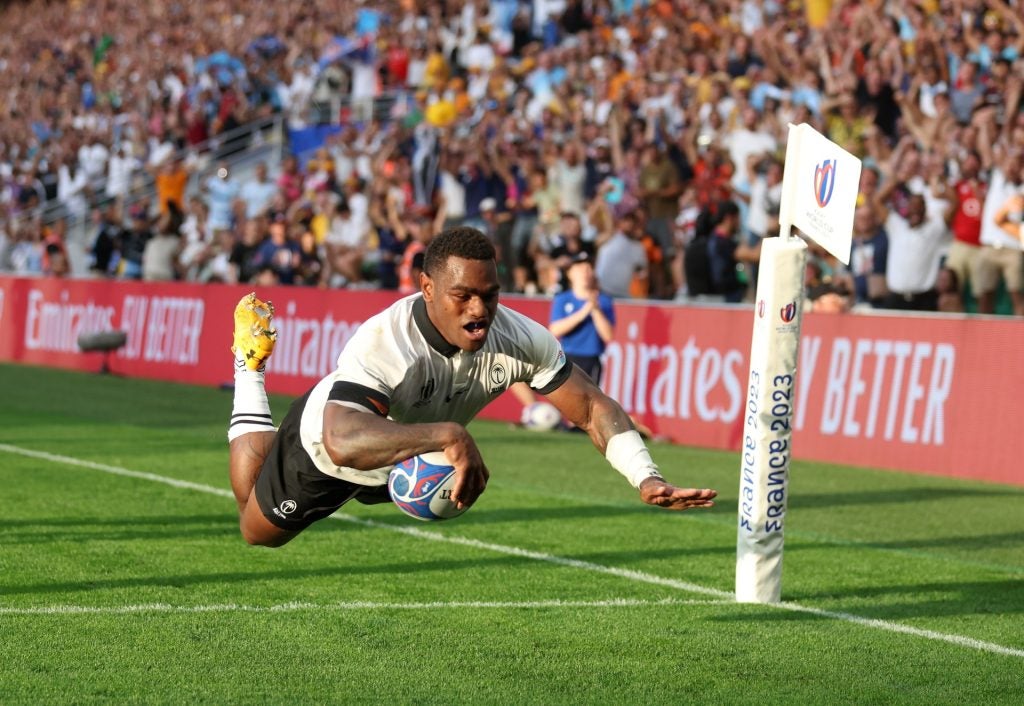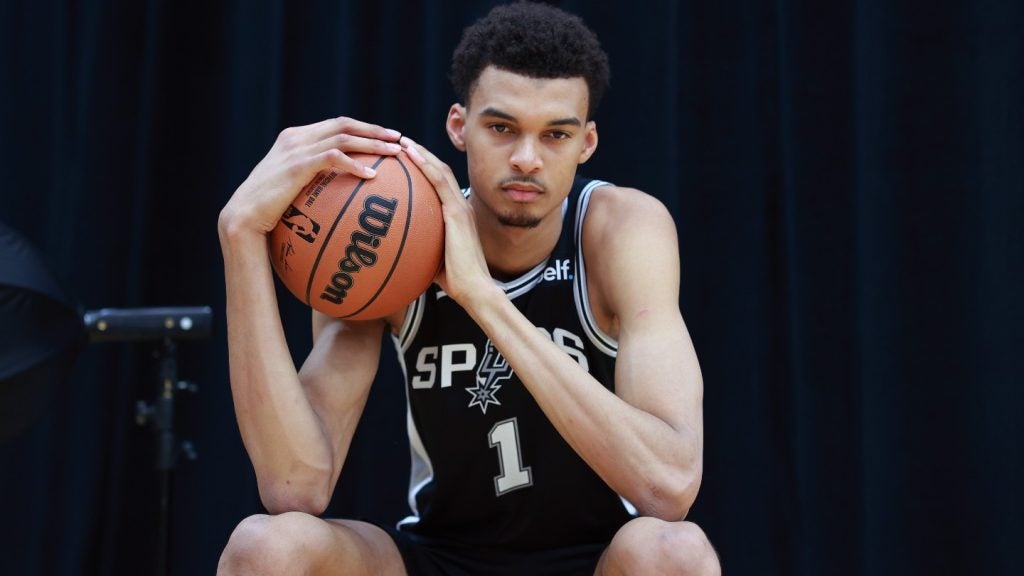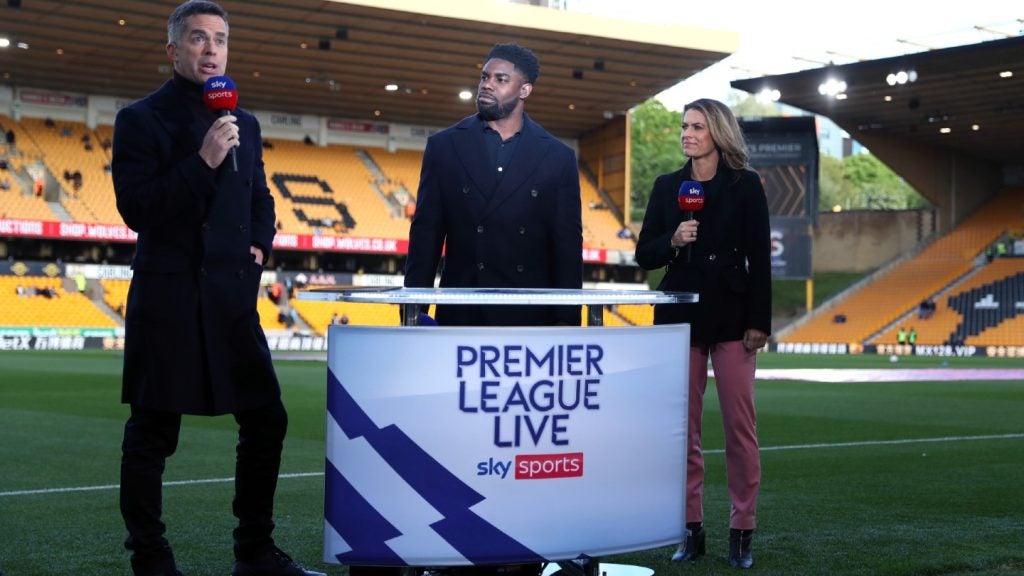
For years football’s leaders had taken a King Canute position on technology, doggedly resisting its use to help officials.
On 6 June 2010 at the World Cup in South Africa, then Fifa president Sepp Blatter called science a passion-killer, saying: “Everybody is an expert and that is why we are not going into technology on the field of play, because if you have technology, then there are no more experts.”
Exactly three weeks later in Bloemfontein, in a last-16 match against Germany, England’s Frank Lampard saw his long-range effort come down off the bar, well over the line. Mauricio Espinosa, the Uruguayan linesman, admitted that, like Germany’s goalkeeper Manuel Neuer, he was caught out by the speed of the shot. Sitting in the Fifa tribune that day, Blatter did what all politicians do, sensing the mood of the people: he changed his mind.
Goal line technology was here to stay. Espinosa and Lampard were not, they went home. Technology companies the world over lined up to start working in the last sport to join the modern world.
Apart from a few die-hards, you would struggle to find opponents of technology as it is currently used in sports officiating. John McEnroe said of Hawk-Eye, the ball-tracking technology: “I think there’s no question I would have been a better player with it.”
Sitting in the Fifa tribune that day, Blatter did what all politicians do, sensing the mood of the people: he changed his mind
How well do you really know your competitors?
Access the most comprehensive Company Profiles on the market, powered by GlobalData. Save hours of research. Gain competitive edge.
 Company Profile – free sample
Company Profile – free sampleThank you!
Your download email will arrive shortly
Not ready to buy yet? Download a free sample
We are confident about the unique quality of our Company Profiles. However, we want you to make the most beneficial decision for your business, so we offer a free sample that you can download by submitting the below form
By GlobalData
In cricket it has become a key part of the game and the entertainment. It’s the same in all major US sports, the NHL pioneering video reviews in 1991, and now reviewing decisions centrally off-site in Toronto. The NBA does the same in New Jersey.
But, and this is the big but, these are all games with natural breaks. You are not upsetting the natural rhythm of the game. In rugby they’re getting there with the TMO (Television Match Official), but that can be slow, although to be fair you need X-ray vision to find a ball buried under 16 forwards.
In football GLT is binary and has no impact, the referee knows within a second (via his watch), so there is no delay, and the game is in fact quicker.
The next massive step in football is VAR, Video Assistant Referees, which are widely dividing opinion. Every mistake stokes the pro-technology lobby, but the purist voice remains strong.
So what is VAR, and what is the fuss about? In simple terms it can be used in only four situations:
• Mistaken identity – where the referee cautions or sends off the wrong player, or is unsure which player should be sanctioned.
And how does VAR work in practice?
Step 3. Decision or action is taken. The referee decides to review the video footage on the side of the field of play before taking the appropriate action/decision, or the referee accepts the information from the VARs and takes the appropriate action/decision.
VAR is a different technological challenge to that presented by GLT, tennis or cricket, where you do need a double first in ballistics, and to deal in millimetres. VAR is forming and sharing a second opinion watching live, and from studying video replays.
While it is not yet being used in major leagues, the Fifa plan was for it to be tested next season in parallel in about 12 leagues worldwide. It has already been widely used in friendly matches, and certain Fifa tournaments. The real challenge is to get the protocols right, and that is the focus of efforts during the testing period.
However, things have accelerated, with the Bundesliga and Serie A, and possibly Portugal, wanting to go live with it next season. Fifa is contemplating using it at the World Cup in Russia in 2018, which would pose the challenge of having enough officials familiar with the system. Certainly the majority of players would not be.
The whole point of the testing period is that this is not easy, as we’ve already seen. When France played England in a friendly match this month, France defender Raphael Varane was contentiously given the first ever red card via VAR, though it was seen as technically correct. When Chile beat Colombia at this month’s Fifa Confederations Cup there were two hairline offside decisions. One Chile goal was denied on review, another confirmed.
There are countless errors in football, which the purist will say balance out, but who can argue that, with so much at stake, decisions shouldn’t be fairer?
There are countless errors in football, which the purist will say balance out, but who can argue that, with so much at stake, decisions shouldn’t be fairer? The reasonable argument is that the game should flow.
In cricket and tennis, reviews are initiated by the players, and limited by number. Under VAR it is entirely in the officials’ hands. It does seem a nonsense that everybody in the stadium (from their smartphone) knows exactly what happened, and only the officials don’t.
In Brazil in 2014, Argentina’s Carlos Tevez scored a goal against Mexico that was clearly offside. Everybody knew this because, in error, it was replayed in the stadium. Surrounded by players, Italian referee Roberto Rosetti looked up at the big screen, in an impossible position – his hands tied. It was exactly the sort of clear critical error for which we need VAR.
Any sportsman will tell you that the priority is consistency. For the fan, one suspects it will also be speed. The referee making his way to the side of the pitch to review a decision takes time, and also raises the problem that he is effectively ‘marking his own homework’. The Fifa guidelines are pretty clear – ‘Minimum interference, maximum benefit’.
FIFA and IFAB (the International Football Association Board, that controls the laws) are building a massive archive of incidents to ensure this is all achieved, with a huge amount of work being done on various scenarios.
One key issue is whether referees should be inclined, and instructed, to blow, and then check, rather than let the game flow? And will they just give a goal without checking – down the years players have always protested, even though they know it is futile. Will this change?
Referees deserve respect and a quiet life, but the current level of scrutiny is almost forensic, the slightest of touches analysed in microscopic super slo-mo HD
Referees deserve respect and a quiet life, but the current level of scrutiny is almost forensic, the slightest of touches analysed in microscopic super slo-mo HD. Who would begrudge them the support to get decisions right? And how on earth do you find a VAR with more knowledge than your average TV pundit? (You can decide if I’m being sarcastic). Pundits are probably the best ‘salesmen’ for VAR, yet anecdotal evidence suggests that on training courses they make the worst referees, tending to see decisions from their own perspective and experience.
GLT is currently used by Fifa, Uefa, the English Premier League, Bundesliga and Serie A. VAR has been lined up by Fifa and 11 federations and leagues around the world. The KNVB has been developing and trialling VAR in Holland since 2013. It appears that offside can be managed in real time, with no game delay, and that decisions on cards can be fed to the official before he has calmed everybody down. It doesn’t need to slow the game.
Football has prospered with very simple laws, applied with common sense. In the last 100 years the only real changes have been substitutes (1958), cards (1970) and the back-pass (1992). So the only change anybody aged under 30 has seen is arming the referee with shaving foam. Then along came GLT in 2012 (which isn’t really a law change, it’s more spot-the-ball), with instances few and far between, but often critical.
However VAR is seismic in the professional game. It will be used continuously, throughout every match, and it is here to stay.
Moving from review to crystal ball mode it is reasonable to assume this will all be speeded up, and refined. In both tennis and cricket they know immediately if the ball or batsman was in or out – it is just played out for terrific dramatic effect. A huge amount of support of the referee can be in real time, and invisible. The protocols will get sorted out. The technology will improve, it always does. And more than anything, which is why we love the game, it will still all provoke debate.







